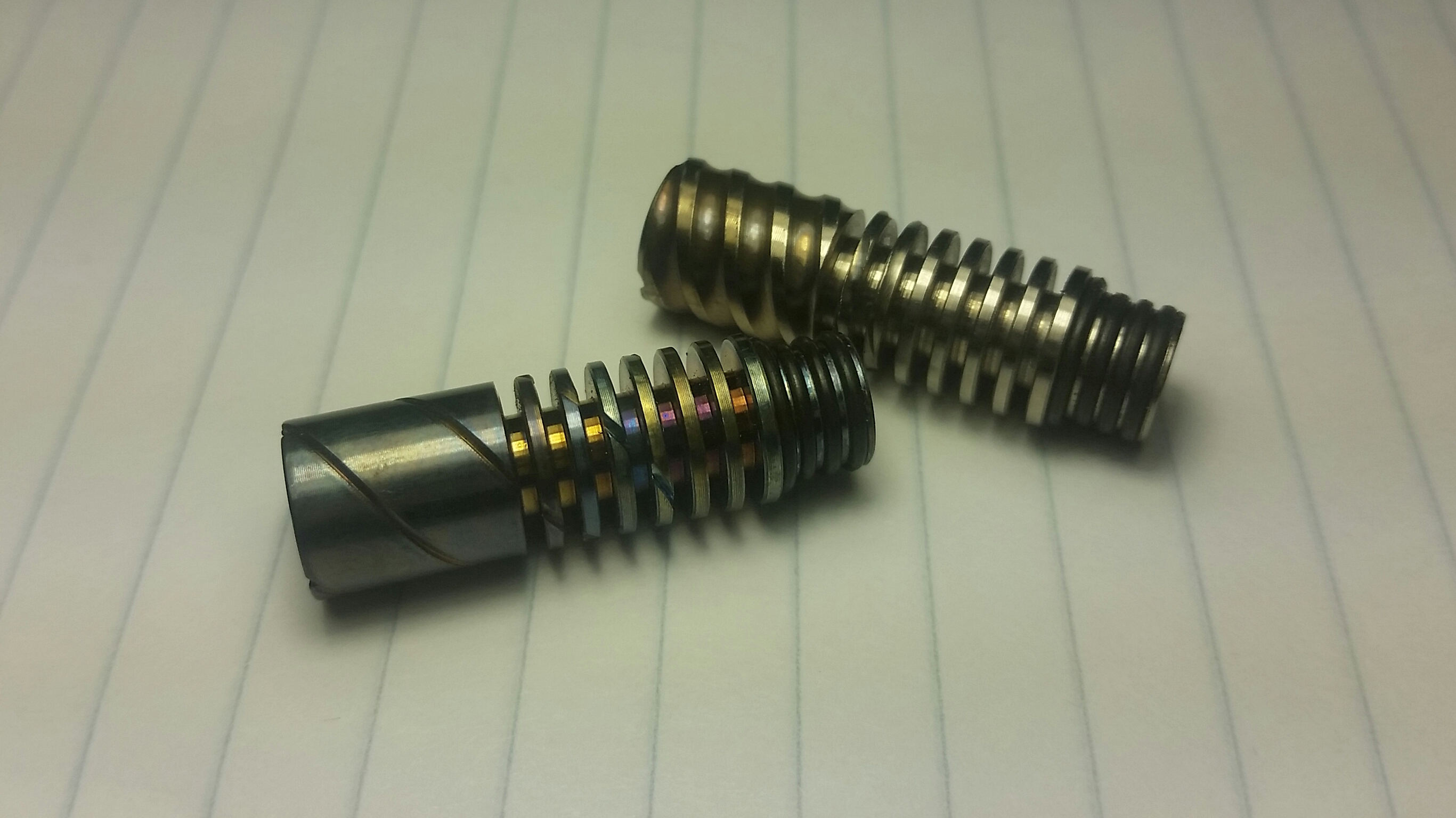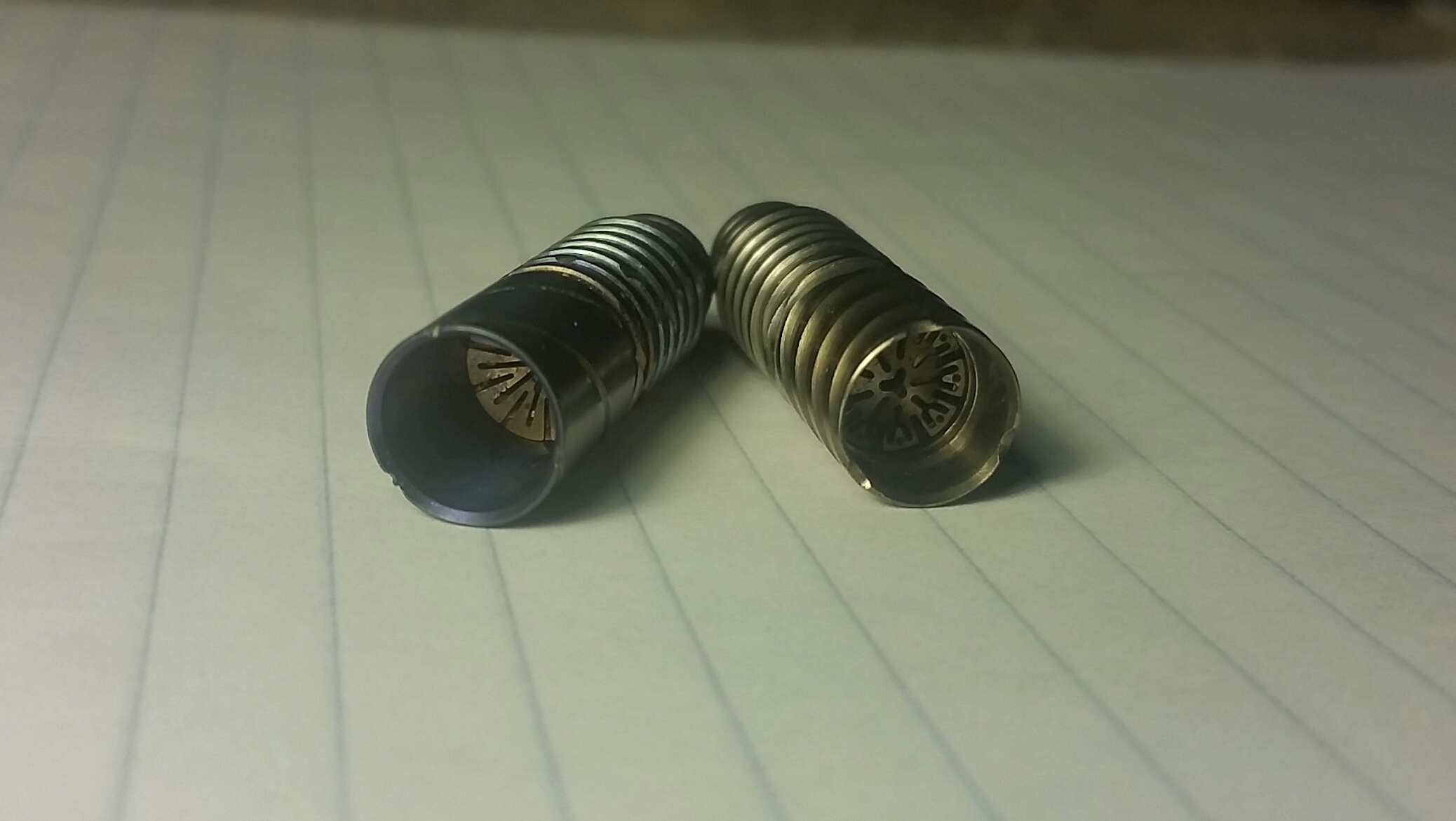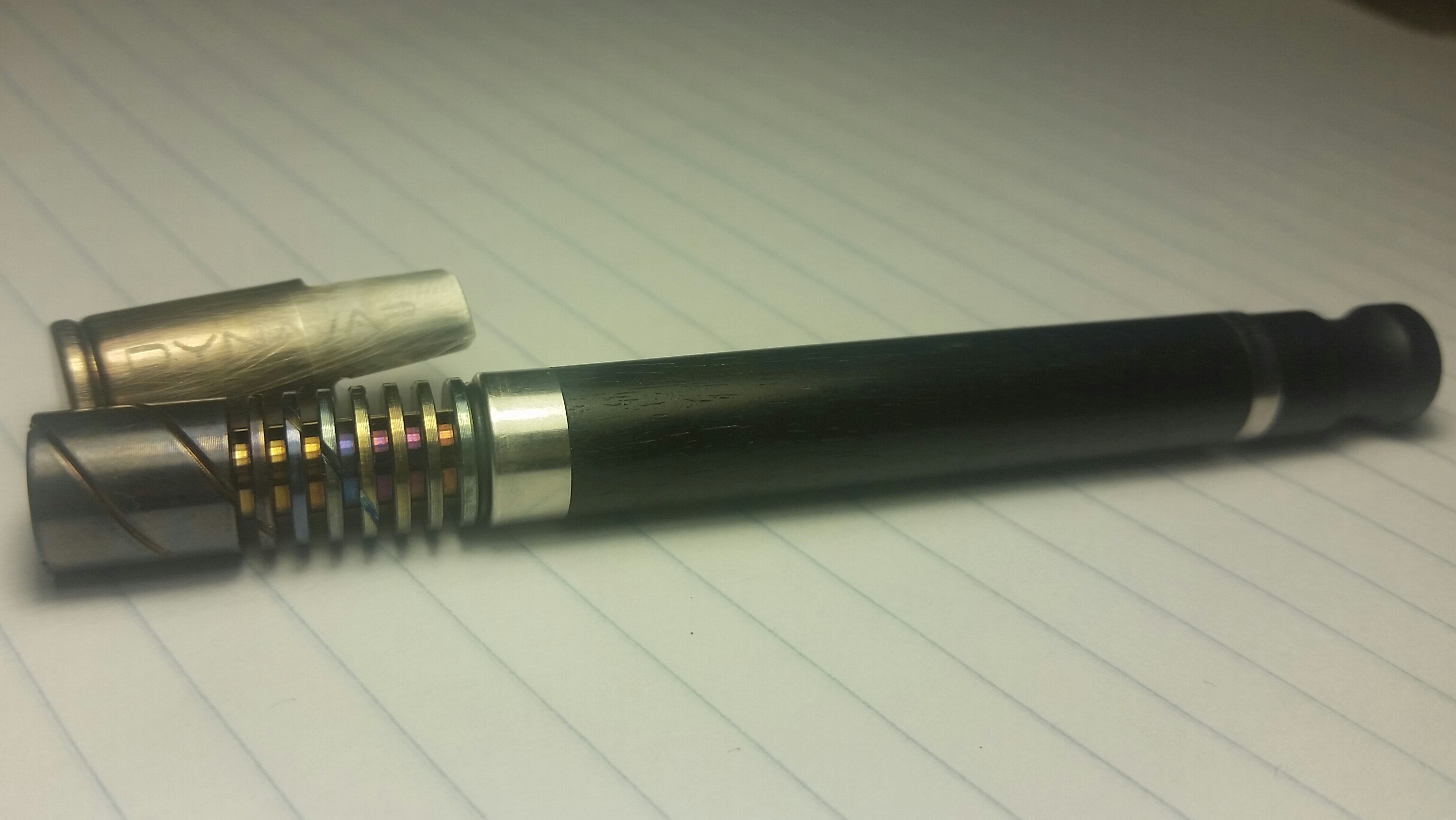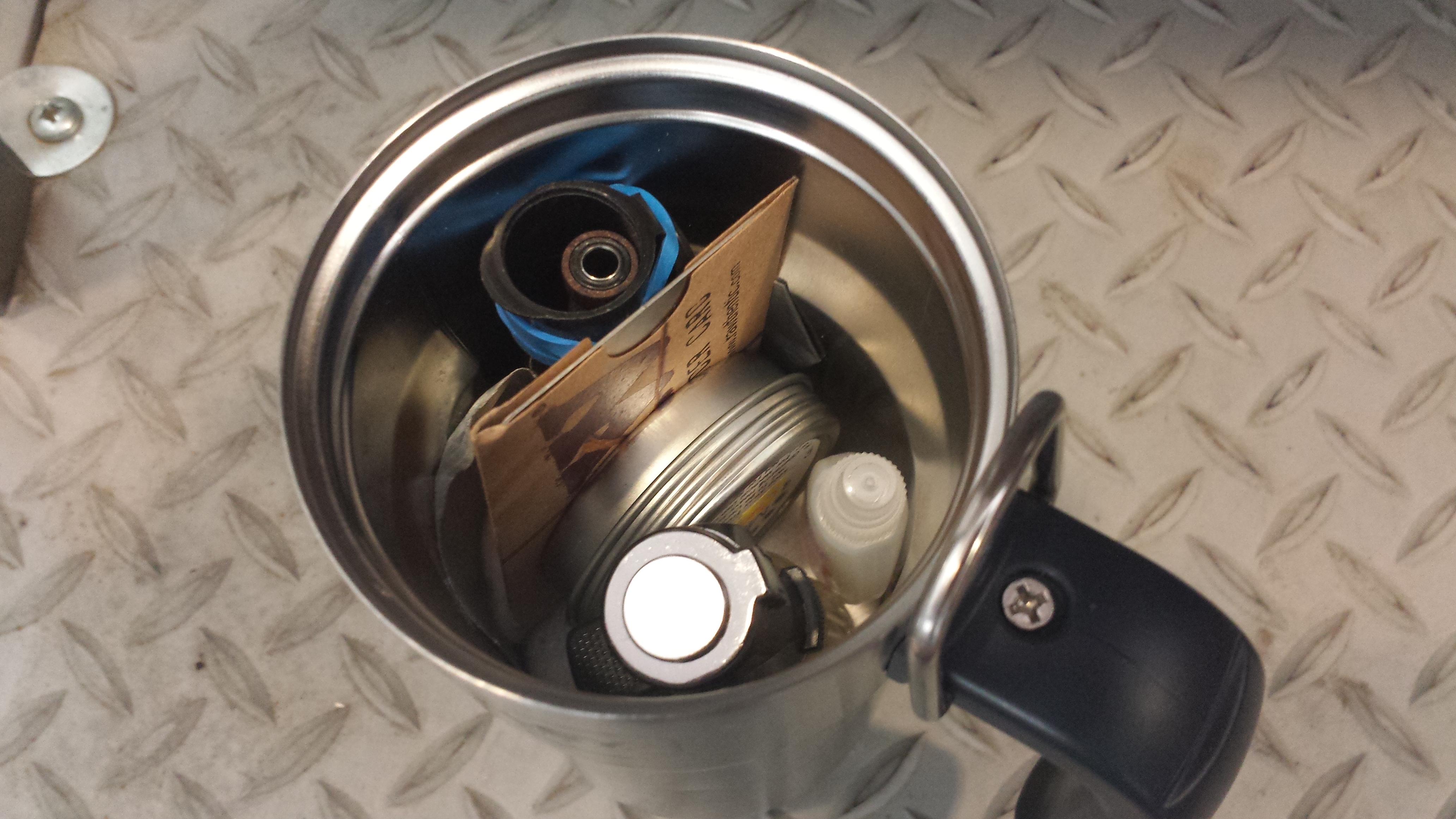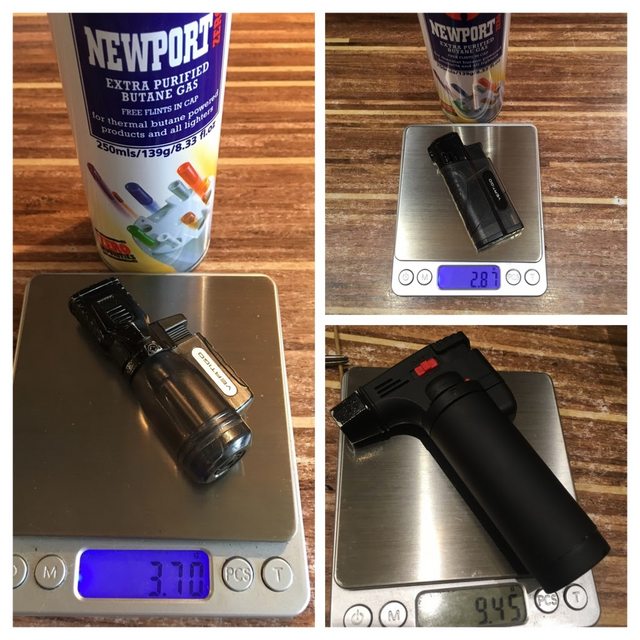Just do not put too much flame to it

(April fools photo repost)
I've serious doubts that an ordinary single flame jet lighter can do that.
The temperature of the flame was not enough to tint the tip green .
Not even cyan.
Heat oxidising Titanium follows the same coloring sequence and oxide layer thickness like
anodizing with electricity.
----------------------------------------------------------------
By applying heat to Titanium surface or anodizing it into ionic aquous solution ,
a transparent Titanium Oxide layer is formed.
This oxide layer reflects and refracts light waves which in turn cause the perception of color to the human eye. Color perception is caused by light interference between the oxide layer and base metal. Observed color is based on the thickness of the TiO2 “oxide” layer that grows during the anodize process. Since the oxide layer thickness can be controlled a wide array of colors can be produced without the use of dyes. Interference color wavelengths are formed by the refraction of light off of and through the thin titanium oxide layer. It is not the oxide itself that is perceived by the viewer, but its effect on light waves.
Only certain wavelengths can be seen based on the thickness of layer at any certain point. The oxide layer depth is measured in angstroms (Å=1/100,000,000 centimeter). This layer can vary in thickness from 500 to 1,000Å+ depending on the color. If the visible wavelengths are read as transmittance, fraction of incident light at a specified wavelength that passes through a sample, and graphed over voltage applied as color spectrum can be observed. This spectrum shows how the wavelengths change and cycle over again as the voltage increases. As the oxide layer grows wavelengths repeat into second order colors. After a thickness of ~3000 Å, the wavelength repetition is so sudden no color can be observed.


Sources : http://techmetals.com/medical-coatings/
https://www.reddit.com/r/balisong/comments/43lsjb/guide_to_homemade_electro_anodizing_titanium/
Last edited:


 Right now she's wearing a heat anodized rainbow body for springtime.
Right now she's wearing a heat anodized rainbow body for springtime. 

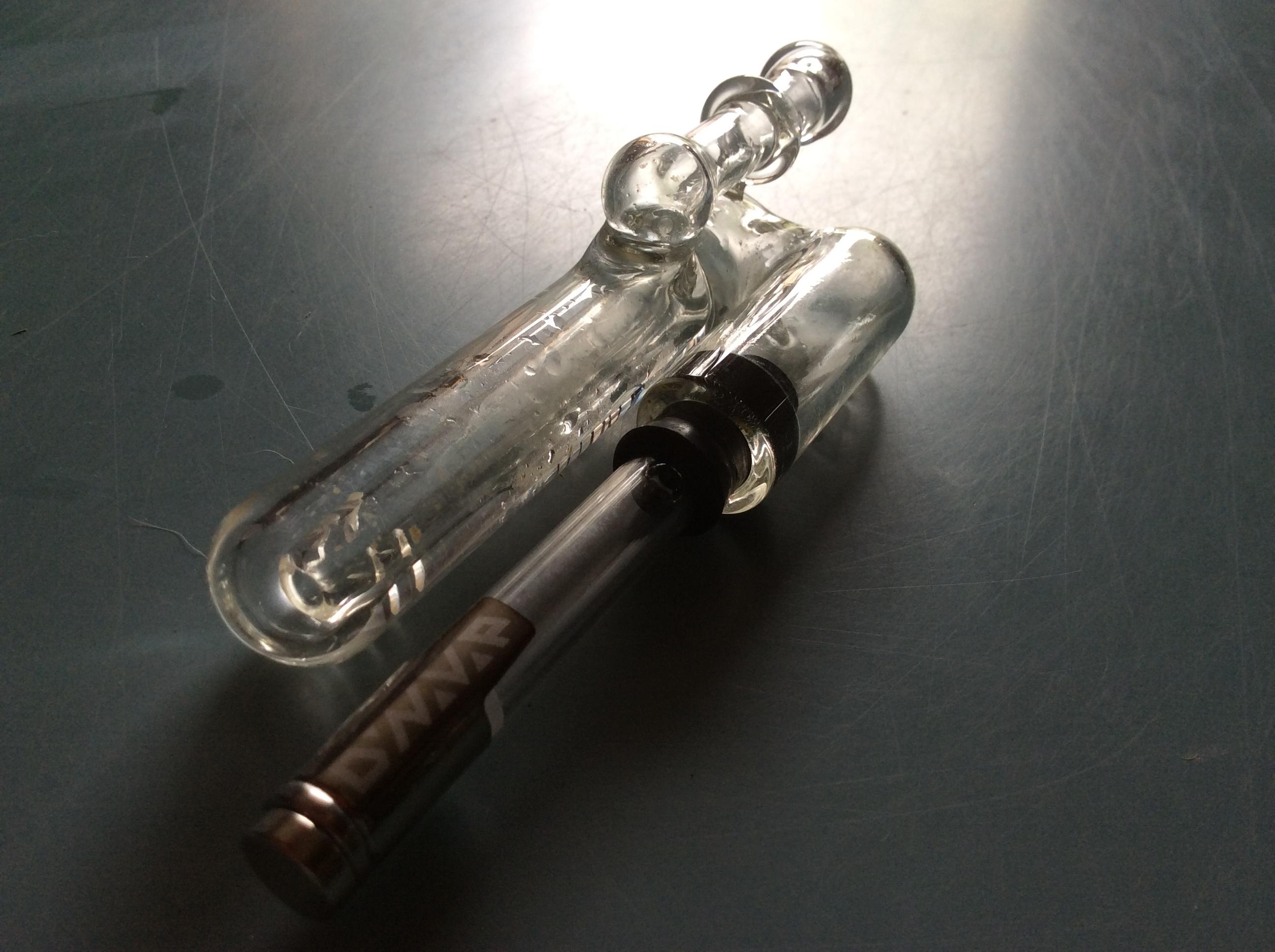






 I think it turned out pretty decent. Here's a pic next to my other, newer Ti tip for comparison:
I think it turned out pretty decent. Here's a pic next to my other, newer Ti tip for comparison: